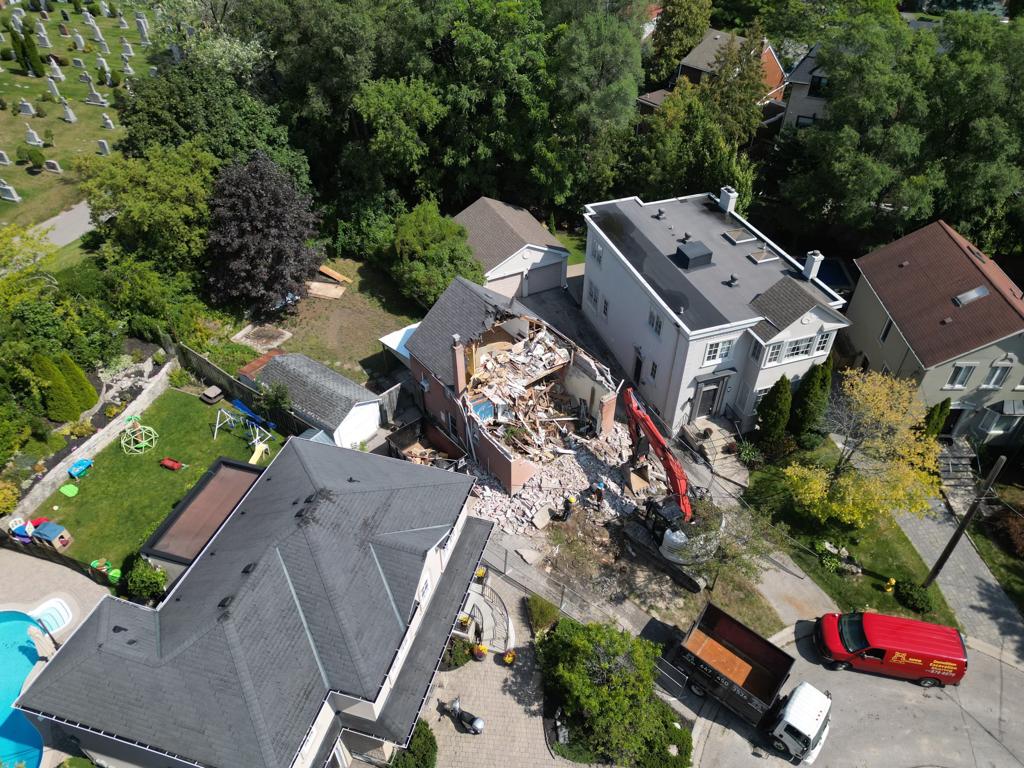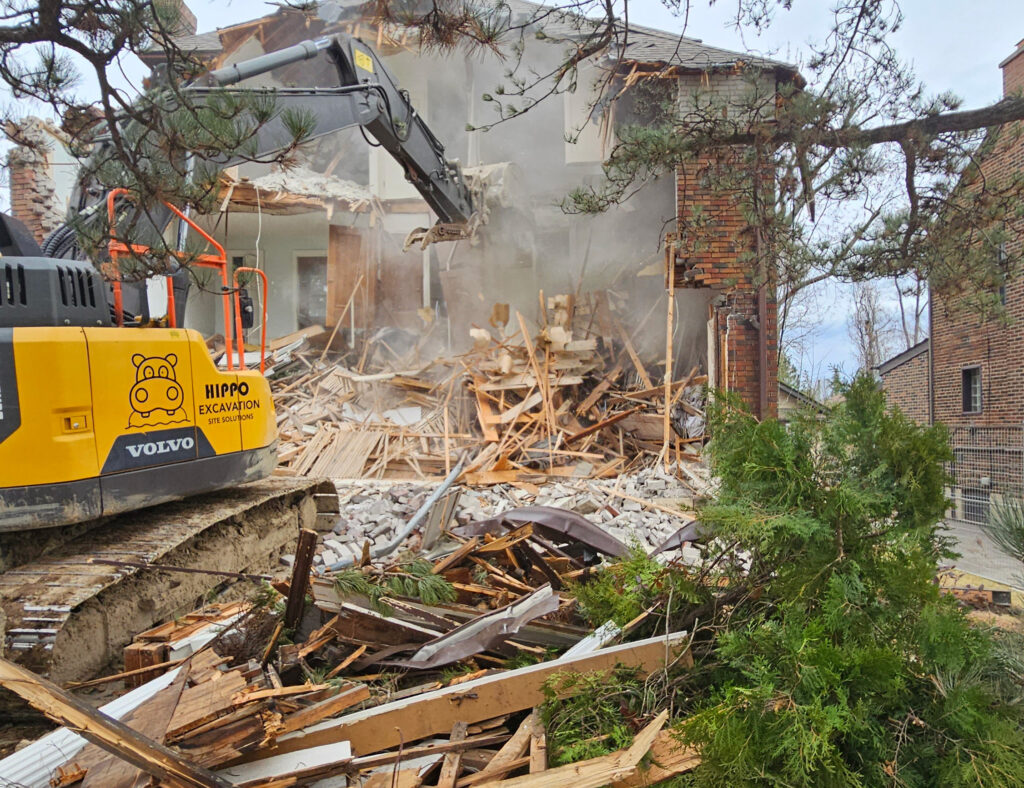A Step-by-Step Guide to the Residential Demolition Process
Demolishing a home or part of a structure is more than just knocking down walls. It’s a carefully planned process that requires permits, safety protocols, proper equipment, and experienced professionals. Whether you’re planning a full teardown or a partial demolition for renovation, understanding the steps involved can help you stay on time, on budget, and stress-free.
In this guide, we’ll walk you through the step-by-step residential demolition process, especially as it applies to projects in Toronto and the GTA.
🧱 1. Initial Site Assessment and Planning
- Every demolition project begins with a site visit and consultation. This allows the contractor to:
- Inspect the building and surrounding property
- Identify structural complexities (shared walls, basements, etc.)
- Understand nearby buildings and potential safety concerns
- Recommend full or selective demolition based on goals
At Hippo Excavation, we offer a free on-site estimate to ensure the plan fits both your vision and your budget.
🧾 2. Obtaining the Right Permits
- Demolition in Toronto and surrounding cities requires proper permits from the municipality. Depending on the scope, this could include:
- Demolition permit
- Tree protection permit
- Heritage building clearance
- Utility disconnect approvals
Tip: It’s illegal to begin demolition without permits in Ontario. This can result in fines or stop-work orders.
Our team at Hippo Excavation can assist you in navigating this step quickly and efficiently.
🔌 3. Utility Disconnection
- Before any physical work begins, it’s critical to safely disconnect all utilities connected to the home:
- Electricity
- Water and sewage
- Gas
- Internet and phone lines
In most cases, the utility provider will need to inspect and approve the disconnection. This prevents hazardous accidents during demolition.
🏗️ 4. Hazardous Material Inspection (If Needed)
Older homes (especially those built before the 1990s) may contain asbestos, lead paint, or other hazardous materials. If suspected, an environmental inspection is needed.
If hazardous materials are found, they must be removed by licensed abatement specialists before demolition begins.
🔨 5. Demolition Begins: Manual, Mechanical, or Both
- Once the site is cleared and secured, demolition can begin. There are two main approaches:
✅ Manual Demolition:
Used for selective or partial demolition, such as removing a single wall, room, or garage. Tools include sledgehammers, jackhammers, and small machinery.
✅ Mechanical Demolition:
Used for full teardowns. Heavy equipment such as excavators, bulldozers, or skid steers is used to safely bring down the structure.
At Hippo Excavation, we match the right method and equipment to your specific project to ensure speed and safety.
🚧 6. Site Cleanup and Debris Removal
- Once demolition is complete, there’s usually a significant amount of debris: wood, drywall, concrete, roofing, and more. We handle cleanup with:
- On-site bin rentals (4 to 40 yards)
- Efficient loading and hauling
- Recycling of materials where possible
Our goal is to leave the site clean and ready for the next phase—whether that’s construction, landscaping, or grading.
📜 7. Final Site Inspection and Documentation
- After cleanup, a final inspection is conducted to ensure the demolition was:
- Done according to code
- Safe and complete
- Free of remaining underground hazards
We also provide project documentation, which may be required by the city for future construction permits.

